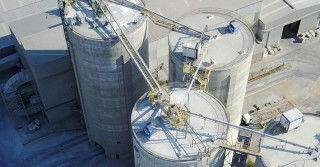Sumit Banerjee, Managing Director of ACC, one of India’s leading cement groups discusses the past year, with 2008 marking the beginning of the end of one of the longest-profitable cycles the country’s cement industry has enjoyed and with December marking the point that ACC had temporarily shut one of its units in December — usually a month considered to be the beginning of a peak demand period in a year. CemNet provides coverage of the interview highlights from the influential Business Standard report.
How has the year 2008 been for ACC? It was an extremely unusual year. The first two quarters saw huge jump in costs. The government’s concerns regarding inflation limited our ability to pass on the cost increase to the consumers to a large extent. Experts talked about India to be decoupled from the global scenario, which did not turn out to be true. Though internationally coal prices have dipped, we are yet to see a clear downturn in the domestic market. We have a situation where demand is not matching up to our expectations. We are ending up with around eight per cent demand growth for the calendar year 2008 — three per cent lower than our expectation.
ACC Concrete has deferred its expansion plans. Why? In 2008, we added new RMC units and want to consolidate on them. But looking at the current demand situation, we deferred our plans in 2009. Industries which consume cement relating to houses, especially in the lower-income group, will get support from the government. However, these segments do not drive RMC demand, which normally is driven by mega city, large infrastructure and real estate projects. We are yet to see a clear picture emerging in these areas. But we are completely behind RMC as a business.
What made you shut the Gagal–II plant in Himachal? When you have lesser demand in the market and have high level of stocks of a perishable product, it makes sense to cut production so that one does not end up losing money and value of products. What we did in Himachal Pradesh was a right decision and was based on our economic considerations. If required, we will take such a decision on our other plants also in case demand remains unsatisfactory.
How will you fund your various expansion projects? We have a sizeable amount of projects under construction, which will be absorbing a considerable amount of cash in 2009 as we have no plans to come out of those projects. Whether we go to the market for more cash will depend on the business scenario. But we have the capability to raise much more than what we raised as going for the debt market seems to be easy now.How relevant is the removal of the export ban? It will have marginal impact. Exports were, anyway, happening from Gujarat. In fact, we want to seek some help and support from the government to bring cement from the hinterlands to the ports.
Will there be more cuts in cement prices? There is no question of any further cuts, otherwise we will die. Instead, we need to increase prices to clear the backlog of the coal price increase. Whatever the prices now, it needs to be maintained at least at that level.
How do you assess 2009? I believe that the worst is yet to come. The first half of 2009 will be better for the cement industry than the second half. Precisely because of the momentum of construction, demand for cement will pull through. But what will happen in the second half of the year will depend on the success of the catalysing actions of the government with its stimulus package. These are uncertain and turbulent times. People are going to wait and watch till the situation settles down before taking a call.
